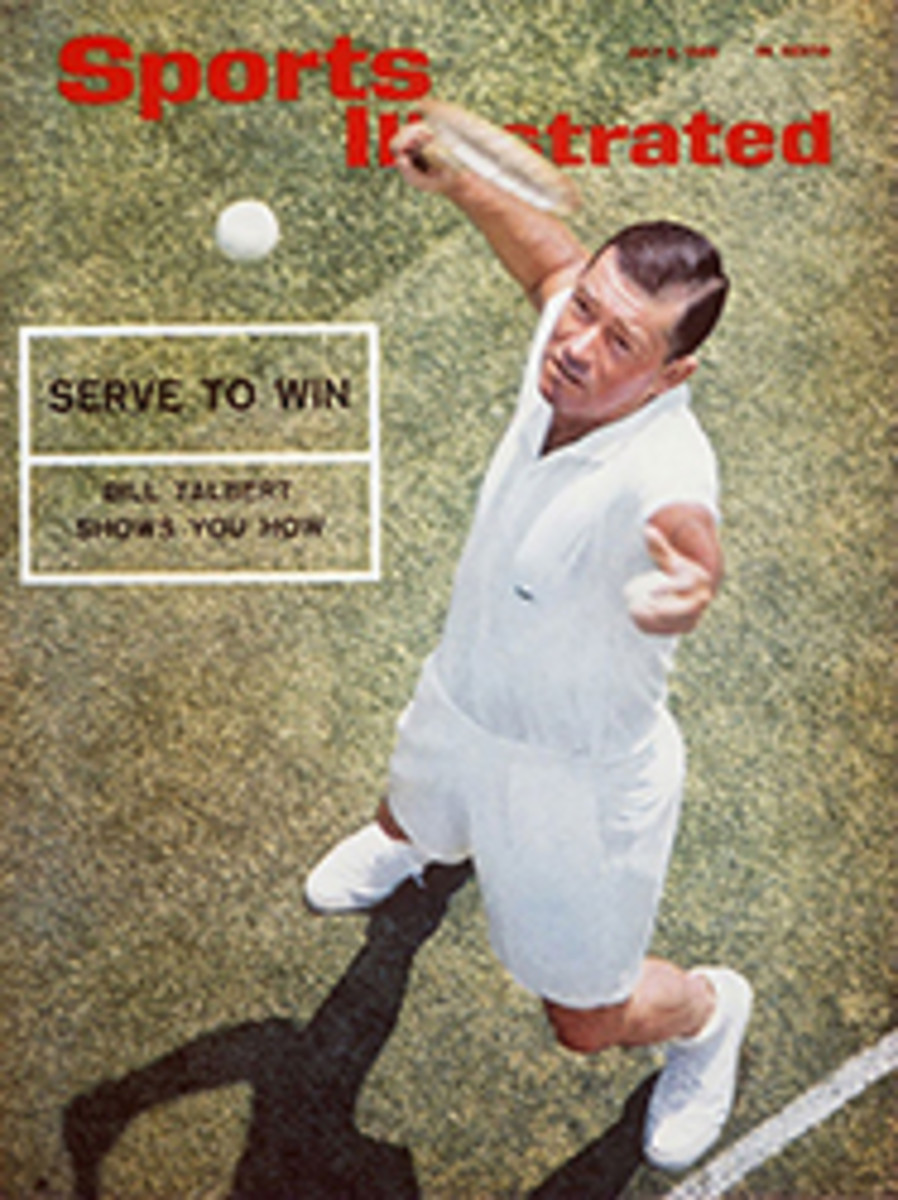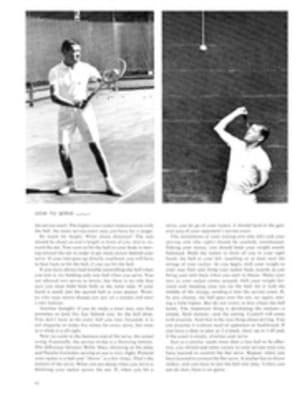
LETTER FROM THE PUBLISHER
For the second year in a row we are presenting a special tennis package, beginning on page 32. The number of tennis players in this country, I am told, has doubled since World War II, and this does not surprise me. There are many reasons why the game should be popular. It does not take long to play. You can leave your home after breakfast—I know a couple of fellows who leave before breakfast—play three sets, return home and still have most of the day with the family. It is a relatively inexpensive sport. Unless you are finicky or careless, a good racket should last a lifetime. Tennis provides all the exercise most people can handle, increasing the wind while it reduces the waistline. Best of all, satisfaction from the play itself is as wide as a player's range of shots. Angle a return of service between your lunging opponent and the sideline and you are, for the moment at least, a fencer scoring a touch. Wallop an overhead that echoes three courts away and you are heavyweight champion of the world.
No wonder, then, that the number of tennis courts in this country increases every year as supply tries to meet demand. The pleasant sound of racket meeting ball can be heard in the most varied places these days—at the Black-foot Junior Tennis Club in Idaho, in salt-spray proximity to Balboa Bay in Newport Beach, Calif. and, believe it or not, inside the walls of Grand Central Station in New York.
Nor is tennis any longer confined to warm-weather months. Indoor courts are springing up all over the country (SI, March 8), including some with surfaces unknown 10 years ago, among them cork and synthetic grass.
Unfortunately, enthusiasm in the U.S. for spectator tennis has not kept pace. Perhaps this is because those who enjoy the game are busy playing it, but I doubt it. A better reason is that the U.S. no longer dominates the tennis world as it did when Tilden, Budge, Kramer and Gonzales were around. The finalists of the U.S. Nationals used to come from Los Angeles or St. Louis, Cincinnati or Philadelphia, but in recent years they have usually been from Australia, with an occasional outsider from Mexico. The tennis may be good—probably better than ever—but for the U.S. spectator, the rooting interest is missing.
Refreshingly, there have been signs of late that U.S. tennis officials are doing something about this fall from the top. Two years ago an" energetic man named Bill Riordan talked the USLTA into taking the National Indoor tournament out of the dingy old armory in New York and putting it in a clean, well-lit auditorium in Salisbury, Md. Since then the tournament has played to a full house but, more important, watching the likes of Roy Emerson, Chuck McKinley and other leading players has stimulated tennis interest among the youngsters of that area.
Similarly, when the Davis Cup was defended in this country last September—a rarity these days—the matches were held in Cleveland instead of Forest Hills and were capably promoted by another bright young man, Bob Malaga. It is significant that the site of the matches was a junior high school athletic field. Every year increased attention is being given to junior tennis programs. Within the next couple of weeks, the best young players in this country will assemble in Columbus, Ohio for intensified training under the Junior Davis Cup program. And in Charleston, S.C. the outstanding high school players from six cities will meet in the fourth annual National City Team Championship.
With this accent on youth, it seems just a question of time before the U.S. produces another great champion. Cliff Richey, for instance, could be the one. You can meet him on page 47 of this year's tennis issue.

